In the circuit shown in Fig. ECE=5.5V,RL=1kΩ,R=500kΩ, the base current, IB is 10μA and collector current, IC=5.2mA. Can this transistor circuit be used as an amplifier?
What happens if the resistance RL is 500Ω and IB,IC and R remain the same as above.
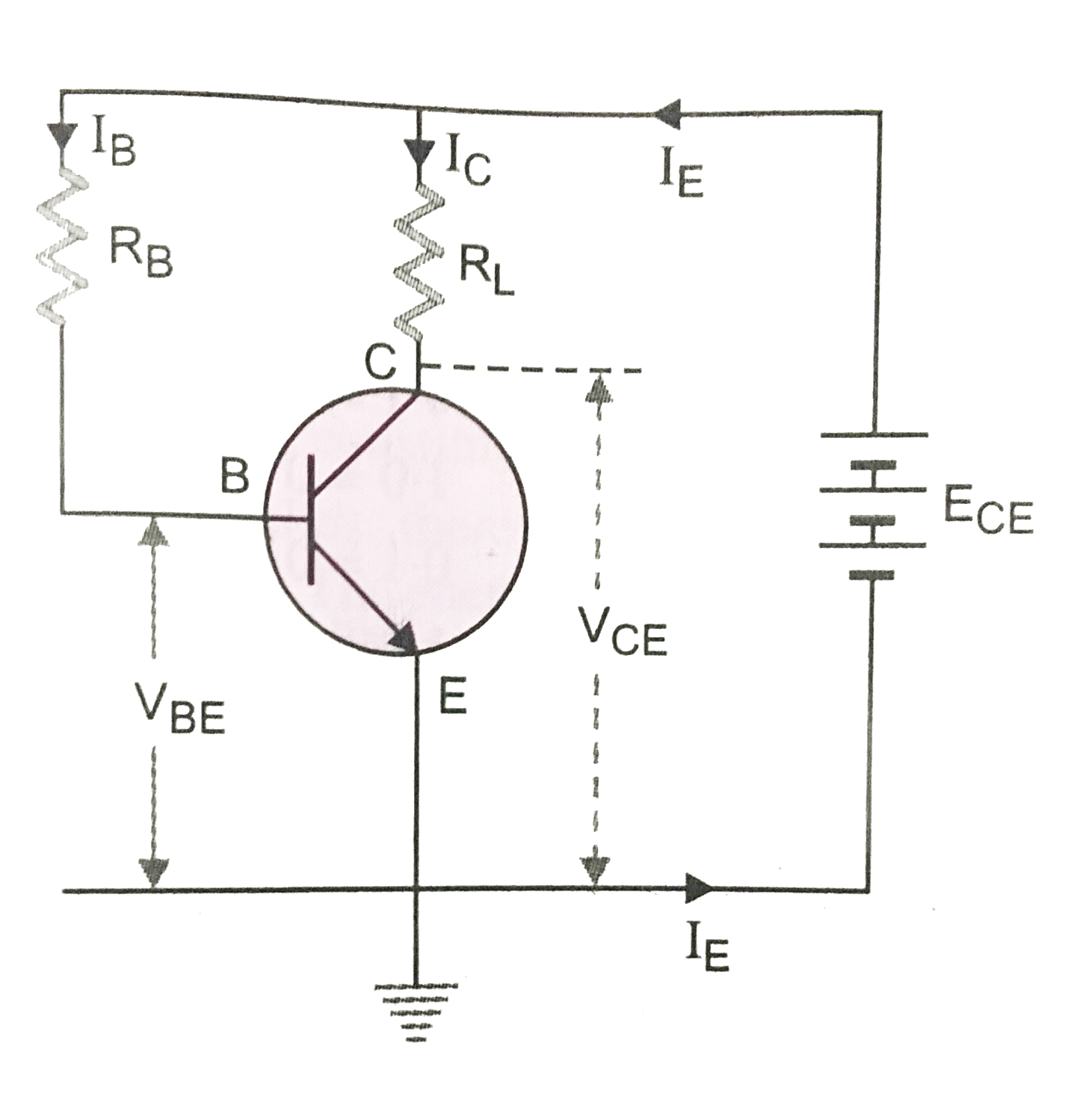
Here ECE=5.5V,RL=1kΩ=103Ω
RB=500kΩ=500×103Ω=5×105Ω
IB=10μA=10×10−6A=10−5A
IC=5.2×10−3A
In a battery, base-emitter circuit, we have VBE=ECE−IBRB=5.5−10−5×(5×105)
=0.5V
In battery, collector-emitter circuit, we have
VCE=ECE−ICRL=5.5−(5.2×10−3)×103
=0.3V
Hence, VBC=VBE−VCE=0.5−0.3=0.2V It shows that base becomes positive by 0.2 V with respect to collector i.e., base collector junction becomes forward biased. As both the junctions become forward biased, the circuit can not work as an amplifier.
Here, RL=500Ω
VCE=5.5−(5.2×10−3)×500=2.9V
VBC=VBE−VCE=0.5−2.9=−2.4V
Now collector is at 2.9V w.r.t. to emitter and base is at 0.5V w.r.t. emitter. So the base collector junction is reverse biased by -2.4 V. Hence the circuit can work as an amplifier.
Topper's Solved these Questions
- BOOK - PRADEEPCHAPTER - ELECTRONIC DEVICESEXERCISE - SAMPLE PROBLEM2videos
ELECTRONIC DEVICES
- BOOK - PRADEEPCHAPTER - ELECTRONIC DEVICESEXERCISE - CONCEPTUAL PROBLEMS1videos
ELECTRONIC DEVICES
- BOOK - PRADEEPCHAPTER - ELECTROMAGNETIC WAVESEXERCISE - II Focus multiple choice question5videos
ELECTROMAGNETIC WAVES
- BOOK - PRADEEPCHAPTER - ELECTROSTATICSEXERCISE - ASSERTION-REASON TYPE QUESTIONS2videos
ELECTROSTATICS
Similar Questions
In the circuit shown in fig., the base current IB is 10μA and the collector current is 5.2mA. (a) Can this transistor circuit be used as an amplifier? (b) What happen if the resistance RC is 500Ω and IB,IC and RB remain same as above?
View SolutionIn the given circuit Fig. 5.11, the base current is 10μA and the collector current is 52 mA. Can this transistor be used as an amplifier ?
View Solution
Knowledge Check
- Question 1 - Select One
In a transistor circuit shown here the base current is 35μA. The value of the resistor Rb is
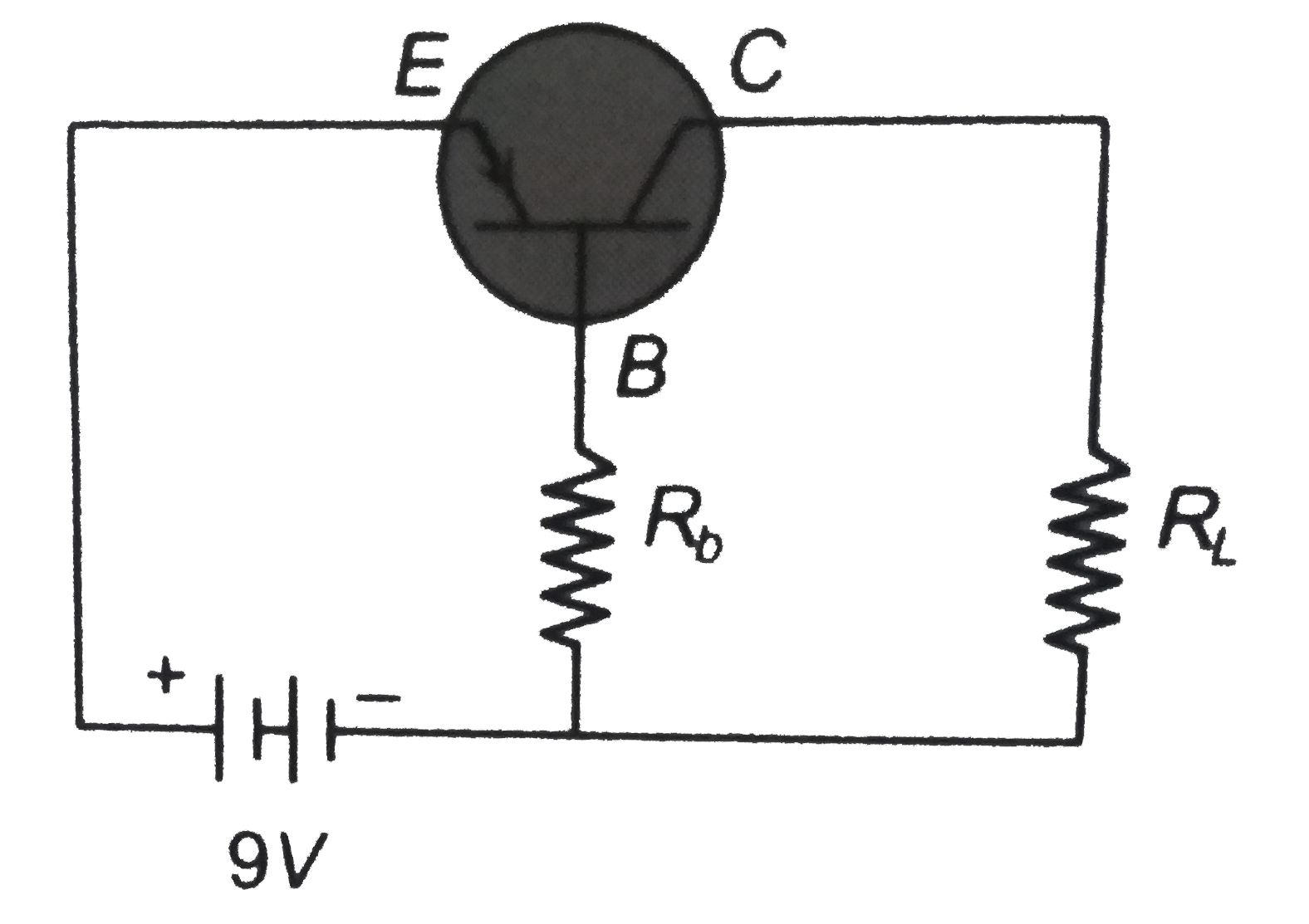 A123.5kΩB257kΩC380.05kΩDNone of these
A123.5kΩB257kΩC380.05kΩDNone of these - Question 2 - Select One
In the circuit shown below E1=4.0V,R1=2Ω,E2=6.0V,R2=4Ω and R3=2Ω. The current I1 is
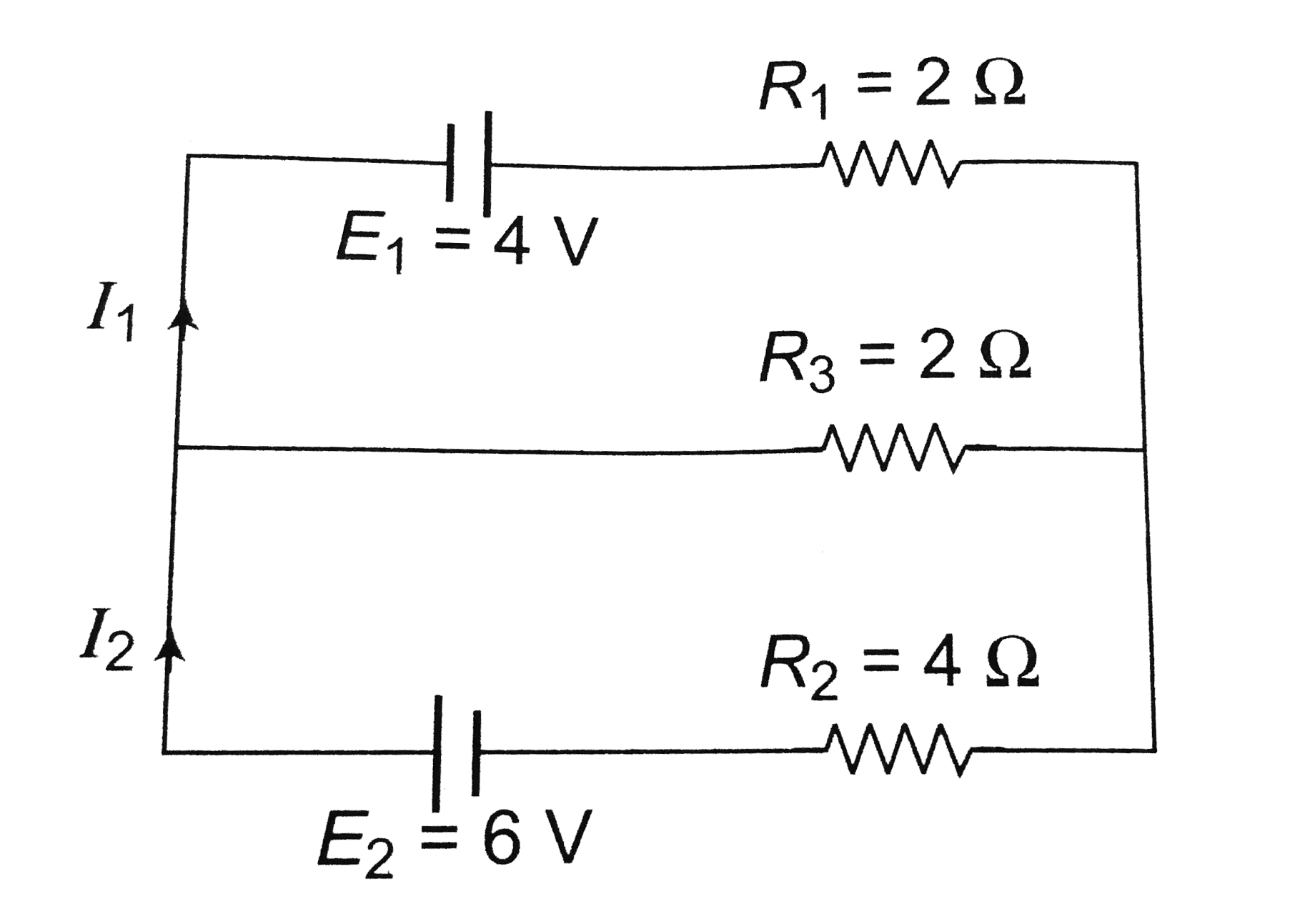 A1.6AB1.8AC1.25AD1.0A
A1.6AB1.8AC1.25AD1.0A - Question 3 - Select One
In the circuit shown in adjoining fig E =10V, R1=1ΩR2=2Ω,R3=3ΩandL=2H. Calculate the value of current i1,i2andi3 immidiately after key S is closed :-
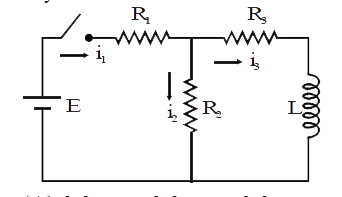 A3.3 amp, 3.3 amp, 3.3 ampB3.3 amp, 3.3 amp, 0 ampC3.3 amp, 0 amp, 0 ampD3.3 amp , 3.3 amp 1.1 amp
A3.3 amp, 3.3 amp, 3.3 ampB3.3 amp, 3.3 amp, 0 ampC3.3 amp, 0 amp, 0 ampD3.3 amp , 3.3 amp 1.1 amp
In the circuit shown in fig the base current IB=5.0μA, base resistor RB=1.0MΩ collector resistor Rc=1.0kΩ the collector current IC=5.0mA and the d.c. voltage in the collect circuit VCC=6.0V. (i) Can this circuit be used as an ampifier? (ii) What happens if the resistance RC is 400Ω and IB,IC and iC and RB remain same as above?
View SolutionIn the circuit shown in figure,the base current IB is 10μA and the collector current is 5.2 mA . The voltage (VBE) across the base and emitter is
 View Solution
View Solution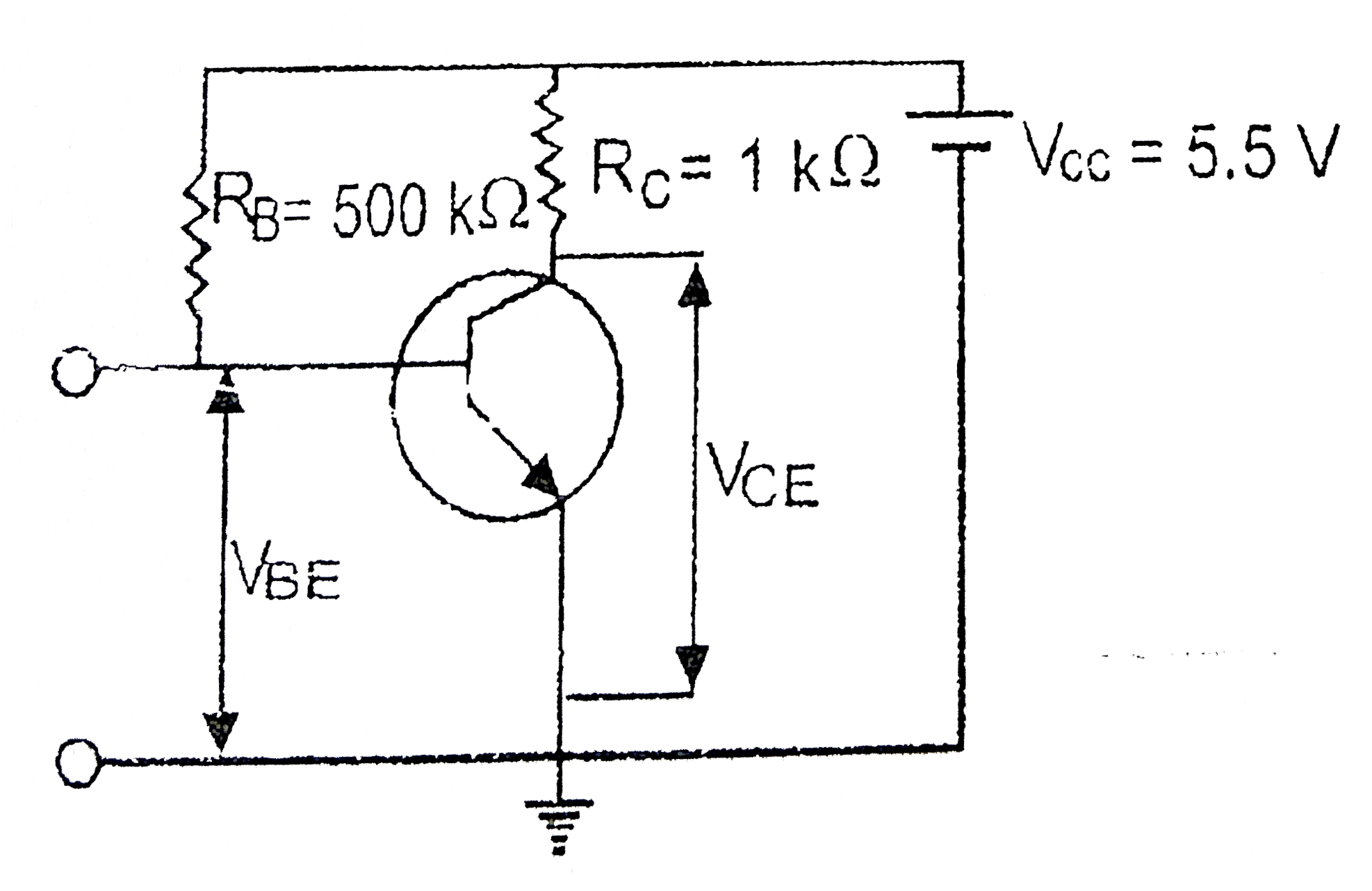
(a) For given transistor circuit, the base current is 10μA and the collector current is 5.2 mA. Can this transistor circuit be used as an amplifier. Your answer must be supported with proper explanation.
(b). For a common emitter amplifier, current gain is 69. if the emitter current is 7 mA then calculate the base current and collector current.View SolutionThe input resistance of a silicon transistor is 665Ω. Its base current is changed by 15μA which results in the change in collector current by 2mA. This transistor is used as a common emitter amplifier with a load resistance of 5kΩ. What is the voltage gain of the amplifier.
View SolutionThe input resistance of a silicon transistor is 665Ω. Its base current is changed by 15μA which results in the change in collector current by 2mA. This transistor is used as a common emitter amplifier with a load resistance of 5kΩ. What is the voltage gain of the amplifier.
View Solution

